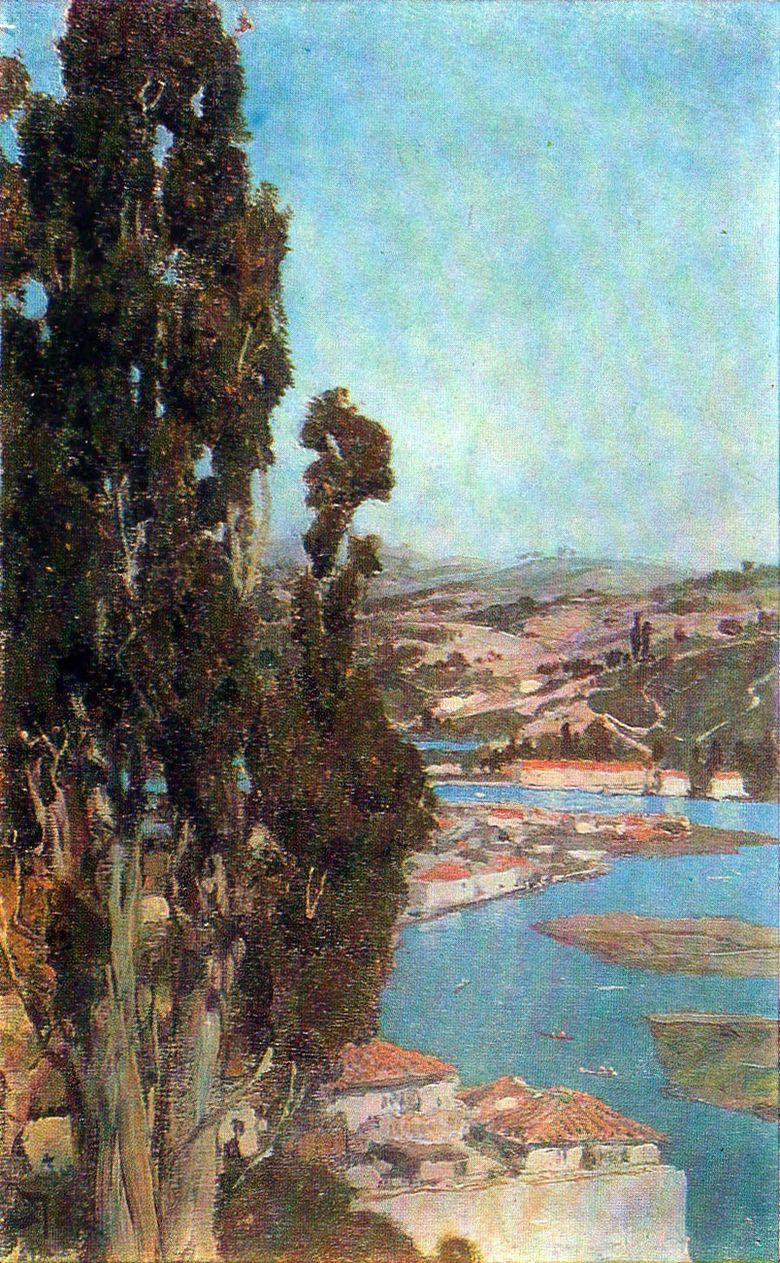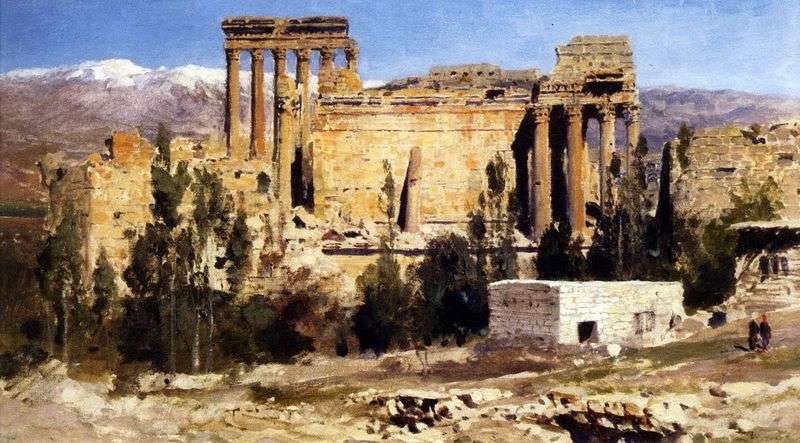
The appearance of the famous Polepov’s “eastern cycle” of etudes is connected with the painting Christ and the Sinner, conceived by the artist, from which the grandiose Gospel cycle subsequently grew. In 1881, V. D. Khrushchev, Polenov’s sister, beloved by him, one of the closest people, died. Already on her deathbed, she made a promise from her brother that he would finally begin to work “seriously” – she meant the work on the painting “Christ and the Sinner,” which had been talked about for a long time.
Polenov’s landscape creativity in his family was not recognized as a “serious” matter, in this sense the artist’s relatives were conservatives. He needed “material”, and in the late autumn of 1881 he, in company with famous art historian A. Prahov and Prince S. Lazarev, set off on a journey.
His path lay through Turkey, Egypt, Syria, Palestine and Greece, the trip lasted until the spring of 1882. The striking colors of the East, his inconceivable types, bright contrasts delighted and amazed the artist – he worked tirelessly. Thus was born the “eastern cycle” of etudes – it was shown at the traveling exhibition of 1885 and immediately acquired by P. Tretyakov.
Around loudly talking about a new word in the painting, said Polenov. “The impression was great,” recalled I. Ostroukhoy. “It was something full of sincere fascination with colorful beauty and at the same time allowing colorful tasks in a completely new way for a Russian artist and an unusual way.” We present two etudes from this Polenov series: “The Olive in the Garden of Gethsemane”, 1882 and “Constantinople. The Golden Horn”.
 Constantinople. La corne d’or – Vasily Polenov
Constantinople. La corne d’or – Vasily Polenov Christ and the sinner by Vasily Polenov
Christ and the sinner by Vasily Polenov Lake Genisaret by Vasily Polenov
Lake Genisaret by Vasily Polenov Golden Autumn by Vasily Polenov
Golden Autumn by Vasily Polenov Baalbek. Ruins of the Temple of Jupiter and the Temple of the Sun by Vasily Polenov
Baalbek. Ruins of the Temple of Jupiter and the Temple of the Sun by Vasily Polenov The patient by Vasily Polenov
The patient by Vasily Polenov Among the teachers by Vasily Polenov
Among the teachers by Vasily Polenov Haram Ash-Sheriff by the area where the ancient temple of Jerusalem was located – Vasily Polenov
Haram Ash-Sheriff by the area where the ancient temple of Jerusalem was located – Vasily Polenov